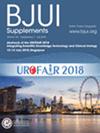比较门诊和住院经皮肾镜取石术:系统回顾和荟萃分析
IF 3.7
2区 医学
Q1 UROLOGY & NEPHROLOGY
引用次数: 0
摘要
目的通过对当日出院(SDD)患者的亚组分析,探讨住院和门诊经皮肾镜取石术(PCNL)围手术期特征和术后结局的差异,总结已发表的门诊路径,并比较成本和满意度数据。患者和方法本研究按照系统评价和Meta分析指南的首选报告项目完成,并在国际前瞻性系统评价注册(PROSPERO: CRD42023438692)进行了先验注册。门诊PCNL定义为住院过夜(≤23 h)后出院的患者,SDD被认为是术后第0天出院的亚组。结果系统评价共纳入25项研究,其中12项比较研究用于meta分析。我们收集了2463例患者,其中1956例(79%)门诊患者(747例[30%]SDD)和507例(21%)住院患者。门诊PCNL队列总体并发症较少(风险比[RR] 0.65, 95%可信区间[CI] 0.47-0.90;P = 0.010);然而,主要并发症(即Clavien-Dindo Grade≥III;RR 0.46;95% ci 0.17-1.21;P = 0.12),急诊科就诊(RR 1.09, 95% CI 0.69-1.74;P = 0.71), 30天再入院(RR 1.09, 95% CI 0.54-2.21;P = 0.81)或在任何时间再次入院(RR 1.00, 95% CI 0.53-1.88;P = 0.99)。门诊PCNL队列更有可能通过影像学定义为无结石(RR 1.35, 95% CI 1.09-1.66;P = 0.005);然而,当无结石包括任何定义时,无结石率没有差异(RR 1.10, 95% CI 0.98-1.23;P = 0.10)。SDD的亚组分析没有发现任何显著差异。每箱节省的费用从932.37美元到平均(标准差)5327美元不等。没有研究报告患者满意度数据。结论抽血PCNL是一种安全、有效的治疗方法。选择偏差可能影响门诊结果;然而,这支持了当前门诊纳入标准的总体安全性。本文章由计算机程序翻译,如有差异,请以英文原文为准。
Comparing ambulatory to inpatient percutaneous nephrolithotomy: systematic review and meta‐analysis
ObjectivesTo investigate the differences in perioperative characteristics and postoperative outcomes between inpatient and ambulatory percutaneous nephrolithotomy (PCNL) with a subgroup analysis of same‐day discharge (SDD) patients, summarise published ambulatory pathways and compare cost and satisfaction data.Patients and MethodsThis study was completed according to the Preferred Reporting Items for Systematic Reviews and Meta‐Analyses guidelines and registered a priori with the International Prospective Register of Systematic Reviews (PROSPERO: CRD42023438692). Ambulatory PCNL was defined as patients who were discharged after an overnight stay (≤23 h) and SDD was considered a subgroup discharged on postoperative Day 0.ResultsA total of 25 studies were included in the systematic review, of which 12 comparative studies were utilised for meta‐analysis. We had a pooled population of 2463 patients, of which 1956 (79%) ambulatory (747 [30%] SDD) and 507 (21%) inpatients. The ambulatory PCNL cohort had fewer overall complications (risk ratio [RR] 0.65, 95% confidence interval [CI] 0.47–0.90; P = 0.010); however, there were no differences in major complications (i.e., Clavien–Dindo Grade ≥III; RR 0.46; 95% CI 0.17–1.21; P = 0.12), emergency department visits (RR 1.09, 95% CI 0.69–1.74; P = 0.71), 30‐day readmission (RR 1.09, 95% CI 0.54–2.21; P = 0.81) or readmission at any point (RR 1.00, 95% CI 0.53–1.88; P = 0.99). The ambulatory PCNL cohort was more likely to be stone‐free defined by imaging (RR 1.35, 95% CI 1.09–1.66; P = 0.005); however, when stone‐free was inclusive of any definition there was no difference in stone‐free rates (RR 1.10, 95% CI 0.98–1.23; P = 0.10). Subgroup analysis of SDD did not result in any significant differences. Cost savings ranged from $932.37 to a mean (standard deviation) $5327 (442) United States Dollars per case. No studies reported patient satisfaction data.ConclusionsAmbulatory PCNL seems to be a safe and efficacious model for select patients. Selection bias likely influenced ambulatory outcomes; however, this supports overall safety of current ambulatory inclusion criteria.
求助全文
通过发布文献求助,成功后即可免费获取论文全文。
去求助
来源期刊

BJU International
医学-泌尿学与肾脏学
CiteScore
9.10
自引率
4.40%
发文量
262
审稿时长
1 months
期刊介绍:
BJUI is one of the most highly respected medical journals in the world, with a truly international range of published papers and appeal. Every issue gives invaluable practical information in the form of original articles, reviews, comments, surgical education articles, and translational science articles in the field of urology. BJUI employs topical sections, and is in full colour, making it easier to browse or search for something specific.
 求助内容:
求助内容: 应助结果提醒方式:
应助结果提醒方式:


